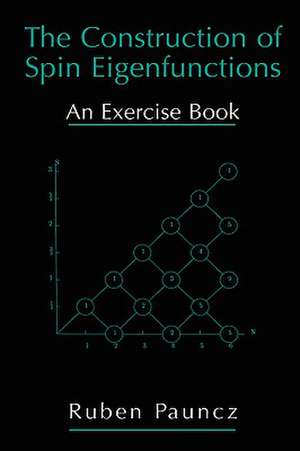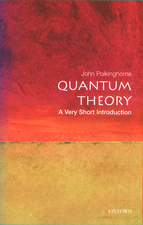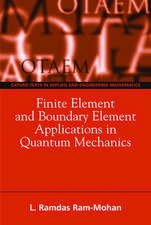The Construction of Spin Eigenfunctions: An Exercise Book
Autor Ruben Paunczen Limba Engleză Hardback – 30 iun 2000
| Toate formatele și edițiile | Preț | Express |
|---|---|---|
| Paperback (1) | 635.65 lei 6-8 săpt. | |
| Springer Us – 17 oct 2012 | 635.65 lei 6-8 săpt. | |
| Hardback (1) | 642.68 lei 6-8 săpt. | |
| Springer Us – 30 iun 2000 | 642.68 lei 6-8 săpt. |
Preț: 642.68 lei
Preț vechi: 756.09 lei
-15% Nou
Puncte Express: 964
Preț estimativ în valută:
122.98€ • 128.72$ • 102.36£
122.98€ • 128.72$ • 102.36£
Carte tipărită la comandă
Livrare economică 01-15 aprilie
Preluare comenzi: 021 569.72.76
Specificații
ISBN-13: 9780306464003
ISBN-10: 0306464004
Pagini: 192
Ilustrații: XI, 192 p.
Dimensiuni: 152 x 229 x 16 mm
Greutate: 0.48 kg
Ediția:2000
Editura: Springer Us
Colecția Springer
Locul publicării:New York, NY, United States
ISBN-10: 0306464004
Pagini: 192
Ilustrații: XI, 192 p.
Dimensiuni: 152 x 229 x 16 mm
Greutate: 0.48 kg
Ediția:2000
Editura: Springer Us
Colecția Springer
Locul publicării:New York, NY, United States
Public țintă
ResearchCuprins
1. The Spin Operator and Spin Functions.- 1.1 Introduction.- 1.2 Spin operators and Pauli matrices.- 1.3 Spin functions.- 1.4 The Dirac identity.- 1.5 Square brackets of spin functions.- 1.6 Graphical representation of the primitive spin functions.- 2. Genealogical Construction of Spin Eigenfunctions.- 2.1 Addition theorem of angular momenta.- 2.2 Addition theorem of spin forNelectrons.- 2.3 The spin degeneracy.- 2.4 Branching diagram symbol.- 2.5 Special properties of the branching diagram functions.- 2.6 The coefficient of a primitive spin function in a given branching diagram function.- 3. Serber Spin Functions.- 3.1 Serber spin functions.- 3.2 Geminal spin product functions. Serber path diagram.- 3.3 Serber branching diagram.- 3.4 Recursion formulas for the highest component.- 3.5 Special properties of the Serber functions.- 3.6 The coefficient of a geminal product in a given Serber function.- 3.7 The algorithm of Carrington and Doggett.- 4. Projected Spin Eigenfunctions.- 4.1 Projection operator.- 4.2 Expanded form of the projected function (Löwdin).- 4.3 Projection of other primitive functions.- 4.4 Relation between the projected functions and the branching diagram functions.- 4.5 Calculation of the overlap matrix of the projected functions.- 5. Spin-Paired Spin Eigenfunctions.- 5.1 Spin-paired spin functions.- 5.2 The Rumer algorithm for the selection of linearly independent spin-paired spin functions.- 5.3 Extended Rumer diagrams (Simonetta).- 5.4 The leading term (Simonetta).- 5.5 Linear independence of spin-paired eigenfunctions.- 5.6 Overlap integrals between Rumer functions..- 6. The Symmetric Group.- 6.1 Basic notions of the symmetric group.- 6.2 Classes of the symmetric group.- 6.3 Representations of the symmetric group.- 6.4 Young tableaux.- 6.5Young’s orthogonal representation.- 6.6 The conjugate representation.- 6.7 The symmetric group algebra.- 6.8 The Young operator.- 7. Representations of SNGenerated by Spin Eigenfunctions.- 7.1 Representations of the symmetric group generated by the branching diagram functions.- 7.2 Yamanouchi-Kotani method for the representations.- 7.3 Branching diagram functions and Young tableaux.- 7.4 Representations of SNgenerated by the projected spin functions.- 7.5 Calculations of A(P) by the Rettrup-Pauncz algorithm.- 7.6 Correspondence between spin-paired functions and Young tableaux.- 7.7 Generation of projected spin functions by Young operators.- 8. Combination of Spatial and Spin Functions.- 8.1 Introduction.- 8.2 Antisymmetric wave function.- 8.3 Combination of spatial and spin functions.- 8.4 Representations of SNby the spatial functions ? jiS.- 9. Calculation of the Hamiltonian Matrix.- 9.1 Spin-free Hamiltonian.- 9.2 Branching diagram spin functions.- 9.3 The determinantal form of the wave function.- 9.4 Serber spin functions.- 9.5 Projected spin functions.- 9.6 Valence—bond spin function.- 9.7 Many—configuration wave functions.- 10. Spin-Coupled Functions.- 10.1 Introduction.- 10.2 Historical development.- 10.3 Spin—coupled wave functions.- 10.4 Spin—coupled valence—bond method.- 10.5 Core—valence separation.- 10.6 SPINS, computer program.- 11. Solutions to the Exercises.- 11.1 Chapter 1.- 11.2 Chapter 2.- 11.3 Chapter 3.- 11.4 Chapter 4.- 11.5 Chapter 5.- 11.6 Chapter 6.- 11.7 Chapter 7.- 11.8 Chapter 8.- 12. Index.




















